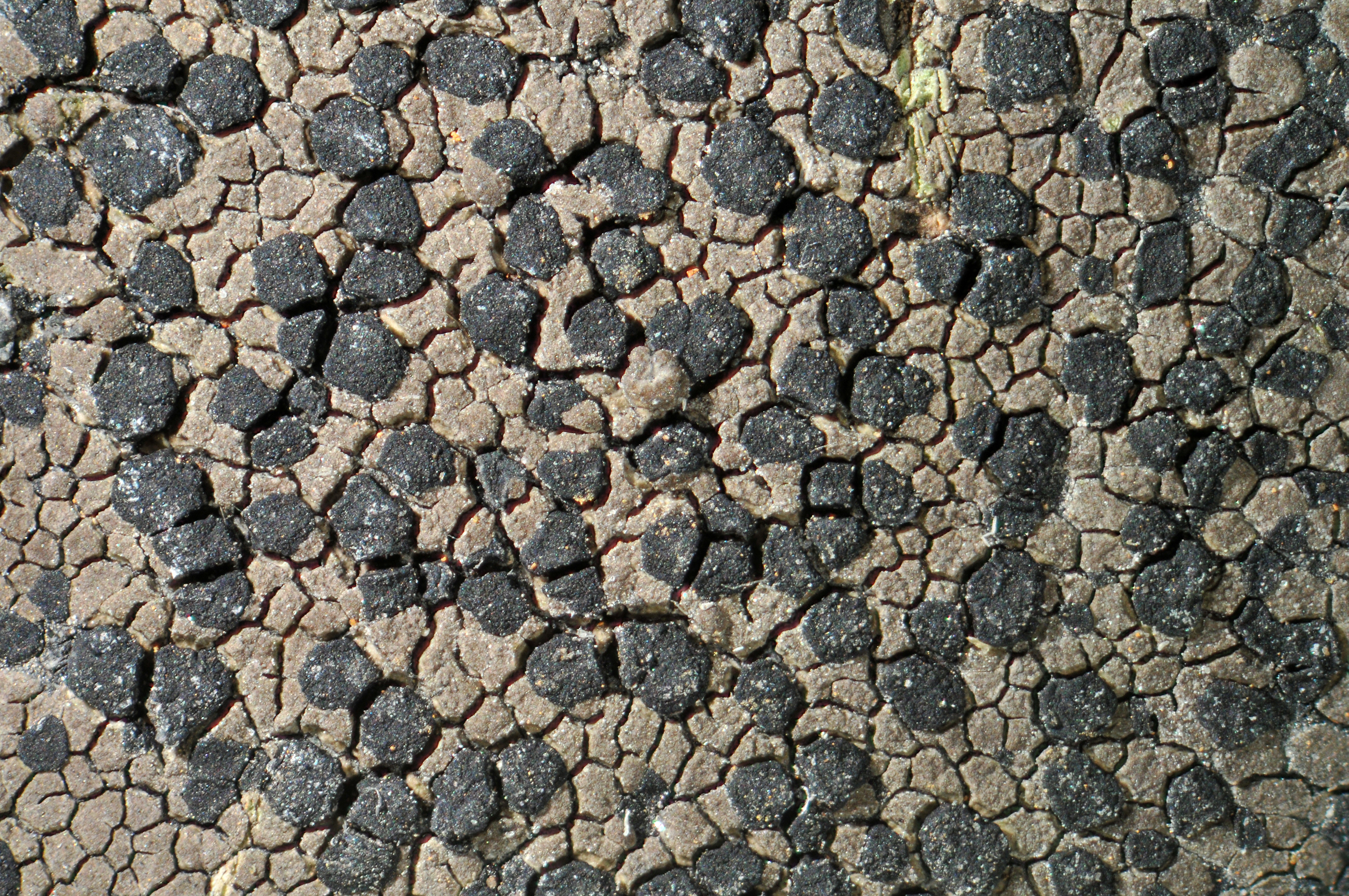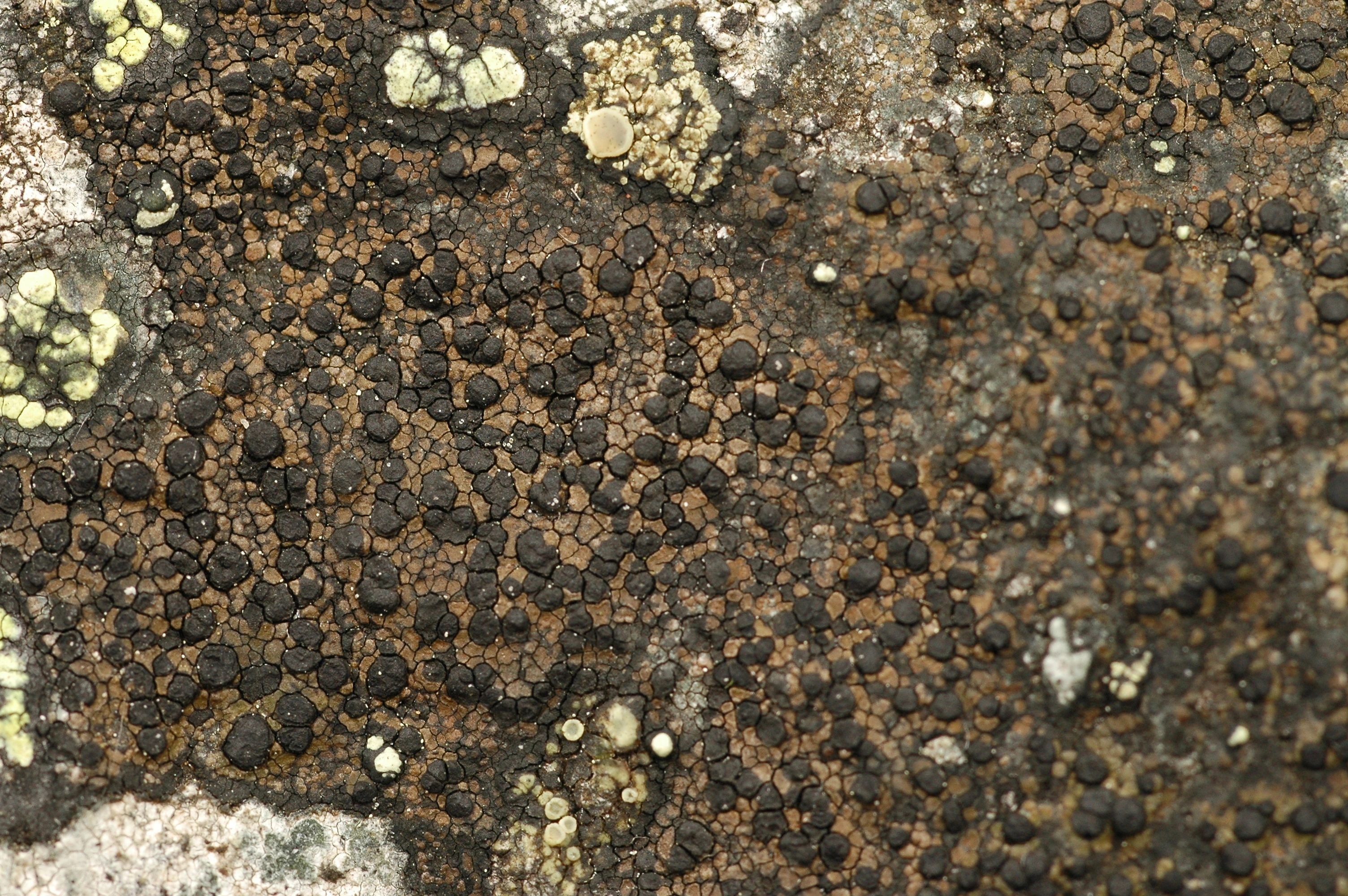Rhizocarpon distinctum
- Innhold
- Morphology
- Chemistry
- Habitat
- Comment
- Look-alikes
Morphology
Thallus areolate, up to 5 cm diam.; hypothallus well developed, black; areolae up to 0.4 mm diam., dark brown, dull, contiguous or more rarely scattered, mainly angular, plane to weakly convex; medulla KI+ dark violet. – Apothecia up to 0.6 mm diam., black, epruinose, orbicular to angular, remaining more or less plane, with a narrow and persistent margin; excipulum brownish black in the rim, inner part paler brown, K+ red; hypothecium dark brown, K–; hymenium colourless; epihymenium dark brown, K+ red; no crystals or granules in the apothecia; ascospores 8 per ascus, submuriform, persistently colourless or becoming somewhat greenish brown with age, 16–27 × 8–13 µm. – Conidiomata not seen.
Chemistry
Stictic and/or gyrophoric acid; spot tests: medulla PD+ orange or PD–, K+ yellow or K–, C+ red or C–.
Habitat
On siliceous rock in the lowland. Rarely collected.
Comment
The species is morphologically, anatomically and chemically similar to the common R. polycarpum and may have been overlooked due to confusion with that species. It differs in having submuriform, not 1-septate, ascospores. Gyrophoric acid is not known from Norwegian material of R. polycarpum. Whereas R. polycarpum occurs from sea-level to well into the alpine region, R. distinctum seems to be restricted to the lowland.

